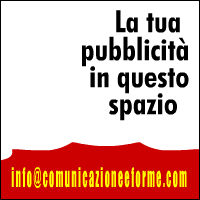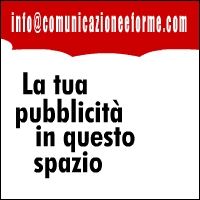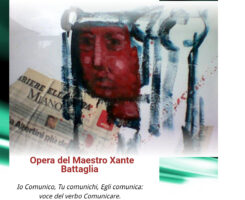MASTER THESIS FOR THE DEGREE IN URBAN AND REGIONAL PLANNING – Dr. Josephine Romeo
MASTER DI I° LEVEL IN URBAN AND REGIONAL PLANNING
Designed to train
ESPERTO IN PLANNING
Author: Dr. Josephine Romeo
1.1 Titolo della Pubblicazione: Transport and Planning. The General Plan of Urban Traffic of Reggio Calabria in the neighborhoods of Saint Catherine and Saint Brunello
– Entity: University degli Studi "Mediterranea” Reggio Calabria – Dipartimento
Scienze Ambientali e Territoriali
– Ente Stage: Municipality of Reggio Calabria – Technical office traffic
– Academic Tutor: Arch. Antonio Maria Leone
– Company Tutor: The. Francesco Germolè
– Schoolgirl: Dott.ssa Giuseppina Romeo
1.2 Cultural references and thematic material related to the research carried out
Transport planning is a complex process that is becoming more a central role in territorial politics as a result of changing economic conditions and production, of new social and environmental emergencies, new forms of cooperation and dissemination territorial settlement. For these reasons, while notifies the existence of more appropriate analytical tools and methodologies cognitive-, emerges at the same time the need a reflection on the problem of transport planning in relation to interactions with the territory.
"When we face the problem of transport, whereas the transport itself has as its purpose last to provide a service, you become aware of the difficulties that we encounter as you are studying a complex process characterized by a double. A first complexity of internal order comes from the large number of variables and the strong interconnection and interdependence of the components that come into play in the process. The other complexity is external order, as the transport becomes a de facto instrument of regulation and certain aspects of conditioning in the development of the territorial system overall. Just the external order highlights the interaction and interdependence between land transport and transport socio-economic development can in fact show how well the mobility finds its essential justification in the use of space” . This makes us think that this is not to argue the technical and specialized studies of the transport sector, ma bensì, moment is important to understand in the functional area of those services, equipment and infrastructure that through proper organization and structuring of the Parties shall ensure an efficient and effective quality Urban, territorial and environmental.
Fundamental object of the study are therefore planning issues related to urban traffic, where we mean by "traffic” not only the behavior of the vehicles in the road network, ma anche le cause di natura sociale ed economica alla base di certi modi di spostamento, the implications that the increase of vehicles operating in urban areas, determined at the political level, administrative, Economic and where does "urban” a spatial context more larger than that of the city "Conventional": practically the whole area where you exercise with a certain intensity the influence of urban, both around the interior settlements, both along the axes that connect these settlements to each other.
Sostanzialmente centrata sull’aspetto urbanistico del problema, Research, starting from the assumption that only a more thorough knowledge of the main variables that determine and characterize the urban traffic can enable you to locate the exact terms of the problem, seeks to define the interactions. The goal of ordering urban transport is not achievable through a sectoral intervention, or by using a single level. Groped for example, to reorganize the traffic only through the physical restructuring of our settlements would be doomed to fail; so as well have given poor results all attempts to solve the traffic problems only in terms of technology, or merely to introduce means of transport fast, or more suitable for city traffic. The complexity of the problem and the large number of factors at play confirm that the only method to obtain reliable results and operative indications realistic is to consider the problem of urban traffic in global terms, from an urban point of view, economic and sociological. “…transport planning sector as, but the sector as a segment of a unitary whole, as and land use planning should be, urban planning and environmental” .
Le proposte che devono essere realizzate nel lungo periodo spesso sono esposte a forti problemi poiché vengono a mutare le condizioni preesistenti, editing users, decision-makers and environmental factors; This involves great difficulties in the achievement of objectives and the solutions chosen to achieve them are not valid. A definition of the problem is that it would be possible to do to formulate and implement the proposed plan in the long term, taking into account not only the nature of the changes, ma anche del modo in cui il sistema può cambiare. The need a new methodological approach to transport planning stems from her ability to incorporate factors of uncertainty.
Considerato che le forme di comunicazione e l’attività umana costituenti il processo di mutamento di un sistema hanno un elemento vocazionale o spaziale, the issue in question can be understood as a space analysis of functional relationships between activities on the one hand and the role played by the element transport, how to support these relationships, other. Giving priority to this aspect of "space” is intended to show, through their contributions, the possibility theory and use of the models, and the difficulties associated with their applications with the aim to compare some of the technical bids with respect to the needs Planning.
“E’ therefore necessary to address the problem in its specificity, in the way of conceiving the new addresses of transport policy, the results of which are closely related to the results of a planning-oriented decisively to regain the effectiveness and efficiency of its own practice.
Program strictly mobility system is one of the tasks to be entrusted to the decisions of the operators technical and political, in una visione di globalità nelle scelte di pianificazione”.
1.3 Objectives of the Project Work
In recent years, strongly gained the knowledge that the prospects for the development of mobility in urban areas are linked not so much not only by infrastructure and capabilities physical transport systems, especially as to the development of sound and rigorous activity control and adjustment of the system.
The goal to which you will reference will be consider the transport system as an essential component of a planning process aimed at achieving effective results globally, seizing the task of an urban transport system to move people and things from one place to another. Primary purpose of this definition is useful because reminds us that the task is defined both from the location of the points of departure and arrival, that the channels of movement. For this reason, the problem of urban transport affects both the planning and design of the city that the transport technology.
With research work aims to lay out the debate on the problem of transport in two lines: define the duties and requirements of the system and identify ways, socially acceptable and economically feasible, according to the canons urban, for the attainment of those objectives.
The planner knows from experience that a change in the channels or in traffic flows will affect configuration of land uses, but can not predict how and to what extent he can wish to use the planning of roads and public transport as a means to achieve a certain configuration of land uses; on the other side, will take also avoid the possible changes in the negative sense that the improvement of the road network or public transport may cause.
It appears evident to consider both sides of the relationship between traffic and land use. If the goal is the pattern of land use, must take into account the potential effect of a change in equipment or traffic flows, while if the goal is to meet the needs traffic, these needs will change with the changing pattern of land use: thus need methods of traffic analysis that take into account the various effects of this report.
Lo scopo di questo studio è la pianificazione territoriale dove la pianificazione dei trasporti è un settore di questo ambito più vasto e più articolato, approaching a systemic, never forgetting also the interdependence between transport and economy, territory as already said and society in its entirety. As part of the systemic problem of transport is in the structural characteristics of the system sees the need to consolidate a function definitely "dynamic": that according to which the activities of transport is an essential component for economic and social progress. Strategic importance of exceptional importance assume in this study, the transport plan that is one of the most effective to pursue the objectives of economic and social development and physical reality territorial. The issue of transport is addressed in an integrated manner is one of the "ways” transport in the "space", therefore, the present work deals with the systematic approach to the problems of processing, design, adoption, implementation and management of a Put and specifically that of Reggio Calabria, accordance with the directives issued under the new rules of the road.
1.4 Metodologia e fasi della ricerca
La difficoltà sempre crescente di conciliare la domanda di mobilità con un tessuto urbano antico e una dotazione di infrastrutture inadeguate e mal utilizzate ha dei riflessi negativi che possono sinteticamente riassumersi in vari aspetti: the protection of the health threat, is that pollution from traffic congestion; the protection of human life is threatened by poor traffic safety; environmental protection, both as a safeguard, both as a recovery of the space and how fruition and protection of the existing; the economic, both for energy saving, and for the recovery of working hours and for the containment of travel times for saving considerable resources to repair damage caused by traffic congestion; these statements comes from the adoption of urban traffic plan.
La metodologia è stata quella di ripercorrere l’articolazione del processo di pianificazione dei trasporti trattando parallelamente i sistemi organizzativi dei trasporti e la loro interazione col territorio, with the socio-economic development and quality Urban; is therefore seemed essential to provide an overview of your tools and methods already consolidated with the watchful eye to the fundamentals of planning.
Nell’ambito di tali tematiche oggetto di studio e di ricerca del project work è stato il piano generale urbano del traffico di Reggio Calabria, and specifically giving attention to the macro-traffic which includes the districts of St. Catherine and S.Brunello.
Prima di analizzare nella sua specificità i complessi problemi legati alla città di Reggio Calabria trattati dal Pgtu si è ritenuto utile accennare alla struttura del processo di pianificazione trattando contenuti, methods and general structure of the transportation planning process, focusing: the three territorial levels, national, regional and local, the transportation planning process corresponding to the three levels of articulation of the public administration and the different territorial scales which manifests the economic and social life of citizens and consequently their demand for mobility; and the articulation of the process of strategic and tactical planning.
Il lavoro di studio tocca insieme tecnica ed urbanistica dei trasporti; as previously mentioned, have emphasized the relationship between infrastructure and land, organizational systems and urban context giving an account of how the problem of the allocation of the effectiveness of communication games an important role for the development of the territory, changes in the use of resources and information on all areas related to them. At the same time we identified the goals PGTU which can be summarized in: improved road safety and reducing the high number of accidents; yield a more orderly movement both in the sense of movement that dwell, proposal and the alternative use of public transport; reducing air pollution and noise and better quality in public spaces, energy saving and limiting the degree of wear of the city. And’ was thus considered, the macrozona S.Caterina – S.Brunello, this does not represent the northern edge of the city established and its suburbs, but further urban part with their centrality for a portion of the municipal area. Regarding the area is traveled a road that goes: the evolution of the organization of the entire settlement area, the infrastructure system to the peculiarities environmental, passando anche attraverso le previsioni per l’area del piano regolatore del Quaroni degli anni settanta, the roles urban functions and characteristics of use, nonché le aree problema, prepositive assessments and methodological references.
Prendendo visione delle elaborazioni grafiche e tecniche del Pgtu degli scenari futuri, guidelines and operational proposals of the plan, the process of transport planning is shown definitely complex in a city where there are many issues and relationships, in function of the fact that, whether the techniques help us in graphical representations, mathematical and statistical, allowing us to define our system as a model in this complexity of forms and contents, arrivare ad una comprensione dei fenomeni urbani significa andare oltre a queste.
1.5 Caratteri di originalità degli esiti conseguiti
Transport planning is of increasing strategic importance in advanced economies because an effective transport network, systems consisting of more Quick, more safer and more cheaper than current, is between the conditions essential to meet the needs for cooperation and / or competition between different areas and economic systems; as the choice of the structure of transport systems is Central to the achievement of quality objectives environmental; why is that respect to the objectives of fairness spatial and efficiency of the territory, la pianificazione dei trasporti è chiamata a ricercare soluzioni in grado di garantire l’equità territoriale sempre più messo in crisi dalla diffusione di modelli insediativi residenziali e produttivi a bassa densità.
"Many of the problems stem from a transport inefficient organization of the territory and defects accumulated during more recent growth of settlements” .
The city effect the territory has, indeed, product of the extreme difficulty to create an efficient system of transport sufficiently widespread as to serve the entire community at affordable cost. The models developed by the urban culture to address the problems of transport interaction – territory are very often treated in a simple way and to some extent even simplistic. It is the result of a lack of integration between the point of view of transport terms, all centered on the sizing and operation of infrastructure systems, and the urban point of view, sensitive to the intended use of the soil and the definition of rules based on criteria to safeguard or control, still poorly equipped to define and manage the entities that the territory they move, although sensitive to relational problems that develop through networks, whether physical or intangible. Emerge di conseguenza la necessità di una migliore integrazione tra politiche urbanistiche e politiche del settore trasporti.
1.6 Fonti bibliografiche
Astarita. V., De Luca M. The urban traffic plans, F. Angels and. Milan 1998
L. White, La Bella A., The planning of transport systems, F. Angels Ed, Milano 1987.
Carbonara L. The analysis of urban, references and methods, New Italian Scientific, Rome 1992
Cascetta E., Metodi quantitativi per la pianificazione dei sistemi di trasporto, Cedam.
Cascetta E., Montella B., Methods for the preparation and management of urban traffic plans and mobility, CNR-II project aims transport, F. Angels Ed, Milan 1998.
Ceccarelli P., Gabrielli B., Rozzi R., Traffic what to do, Marsilio Ed, Padua 1968.
Colombo G., Manuale dell’urbanistica, The sun 24 hours, Pirola , Milano 1997
Colombo G., Codice dell’urbanistica, The sun 24 hours, Pirola, Milano 1996
De Luca M., Manuale di pianificazione dei trasporti, F. Angels, Milan 2000
Ferrari P., Fondamenti di pianificazione dei trasporti, And Pythagoras.
Fiorentini F.,Russo G., Transport and territory:nodes and perspectives in Italy, F. Angels Ed, Milan 1979
Iascone P., The urban traffic plan, Giuffrè Ed., Milan 1997
Karrer F., Territorial effects of transport infrastructure, Pilgrims and. Cosenza 1995
D. Passarelli, Transport policies and plan, Ed Gangemi, Rome 1999
Reggiani A., Land use and transport, Franco Angeli Ed., Milan 1985.
Kineo n° 5/1994 Nodi Urbani, pp.2-5; 17-23; 104-107
Kineo n° 7/1995 Public Transportation, pp.32-33; 59-69
Kineo n° 12/1996 Project Financing, pp.80-83; 119
Kineo n°13/1997 Integration, pp.3-9; 37-48
General review of routes n° 773/1999; 804/2001
No Territory° 26/2003 pp. 107-113
Urbanism No Information°157/1998 pp. 14-15; 48-55
Urbanism No Information°163/1998 pp. 47-48; 53-59
Urbanism No Information°184/2002 pp. 27-37
Urbanistica n.113/1999 pp.37-42.
Urbanistica n.115/2000 pp.35-43; 52-59
Relazione tecnica ed allegati cartografici del Pgtu di Reggio Calabria
Technical Report on the variant of the Prg Reggio Calabria
__________________
Note: before publication on November Communication and Forms 2005, the site comunicazioneeforme.com














